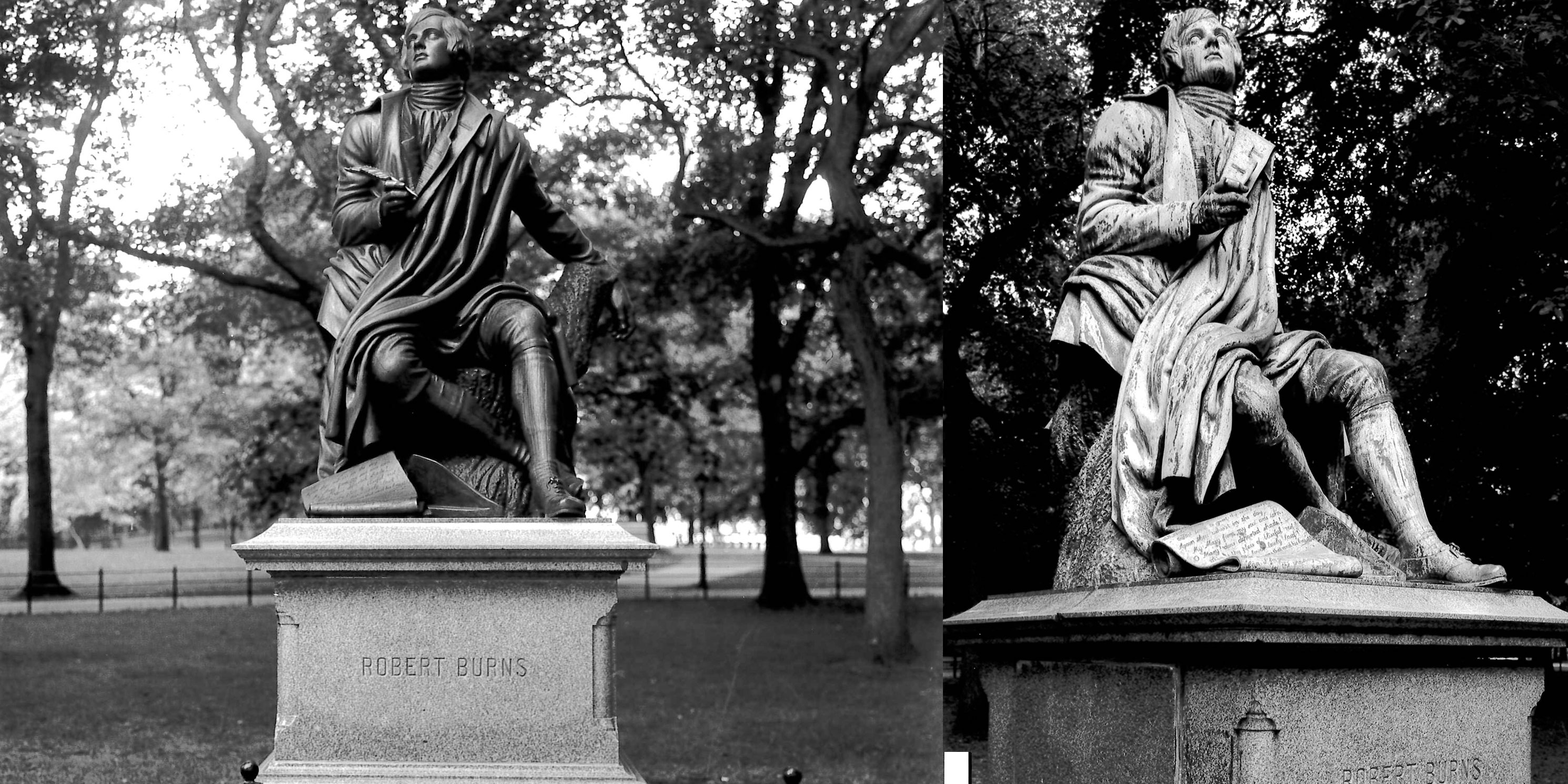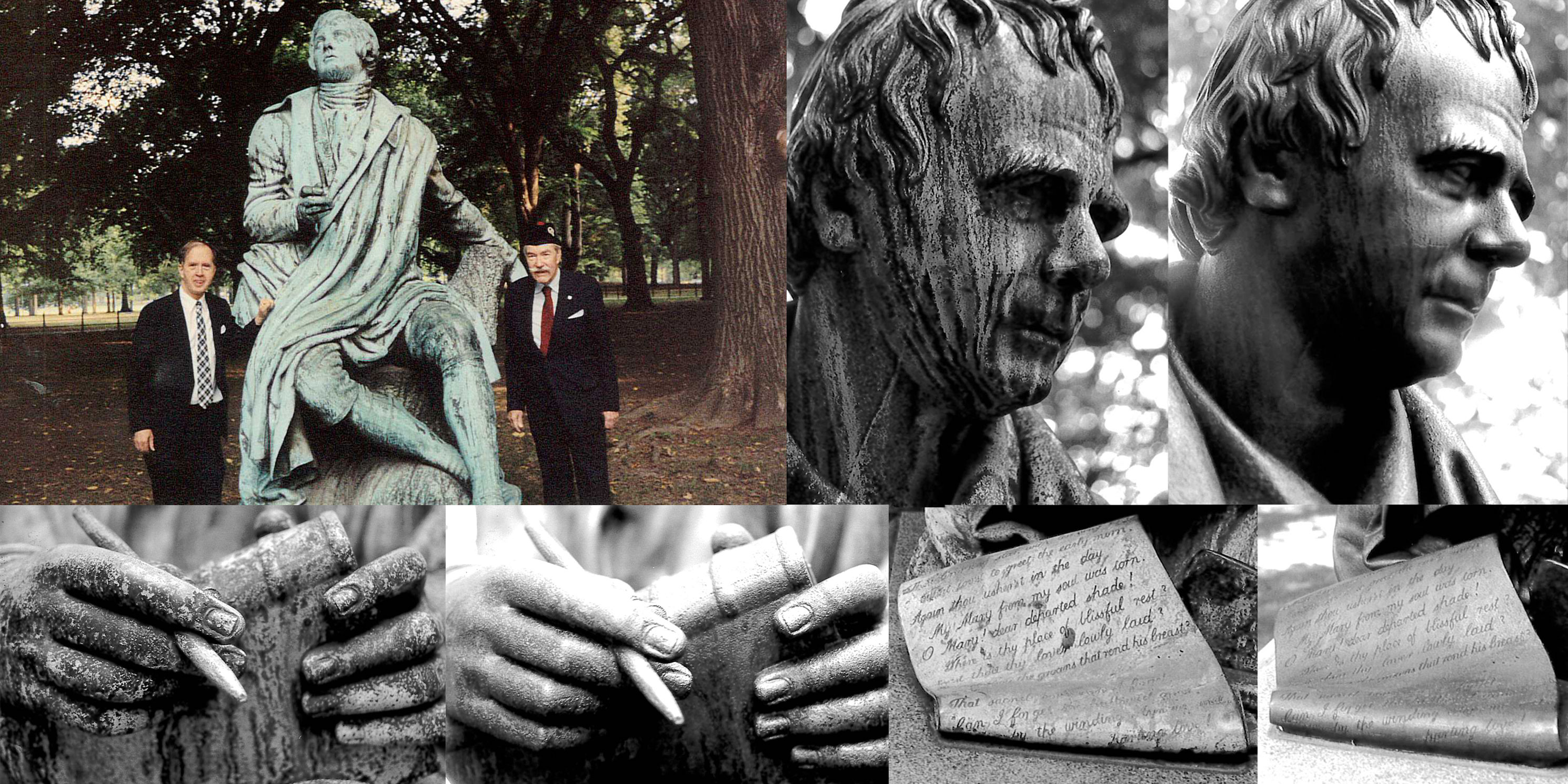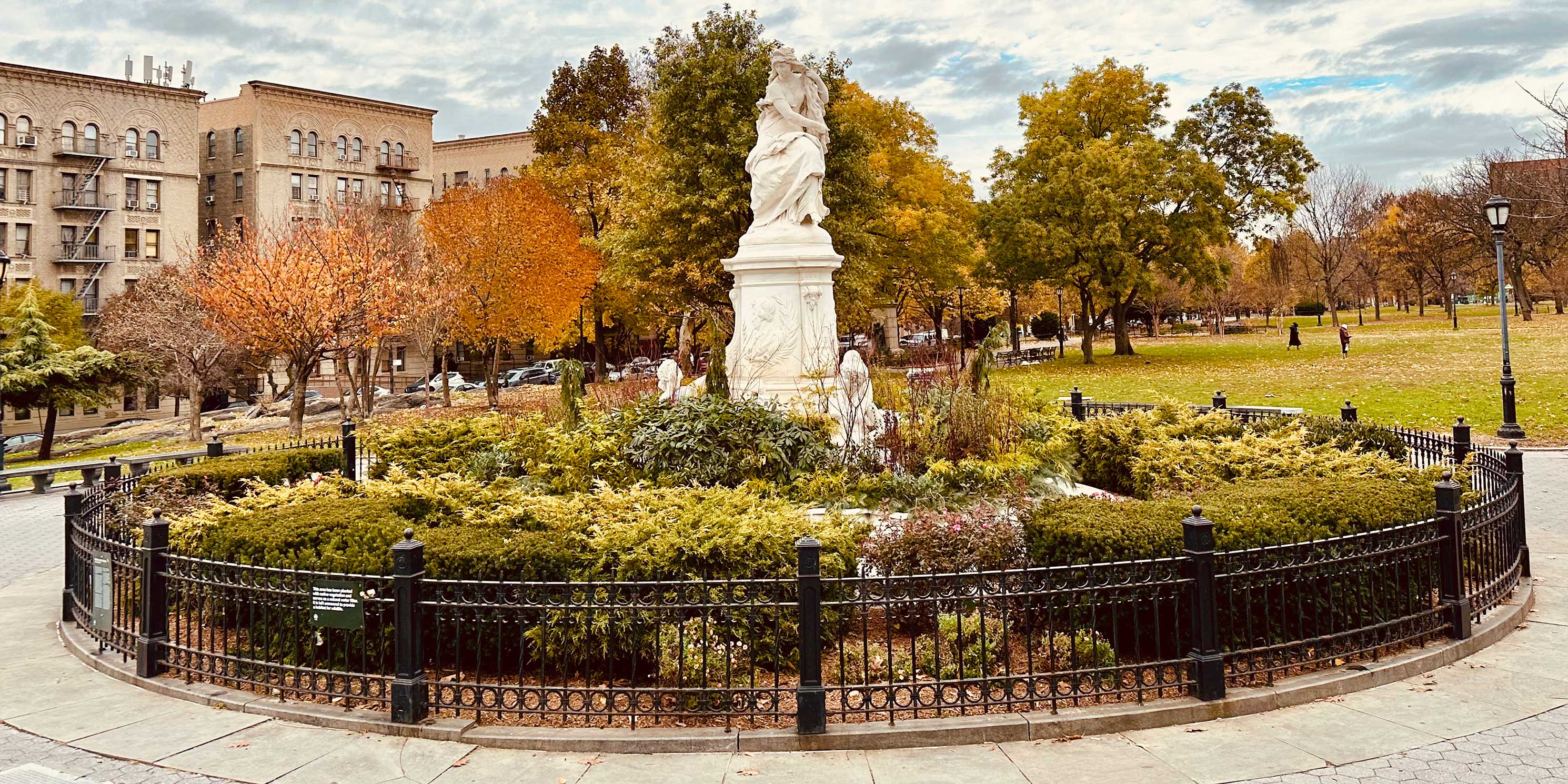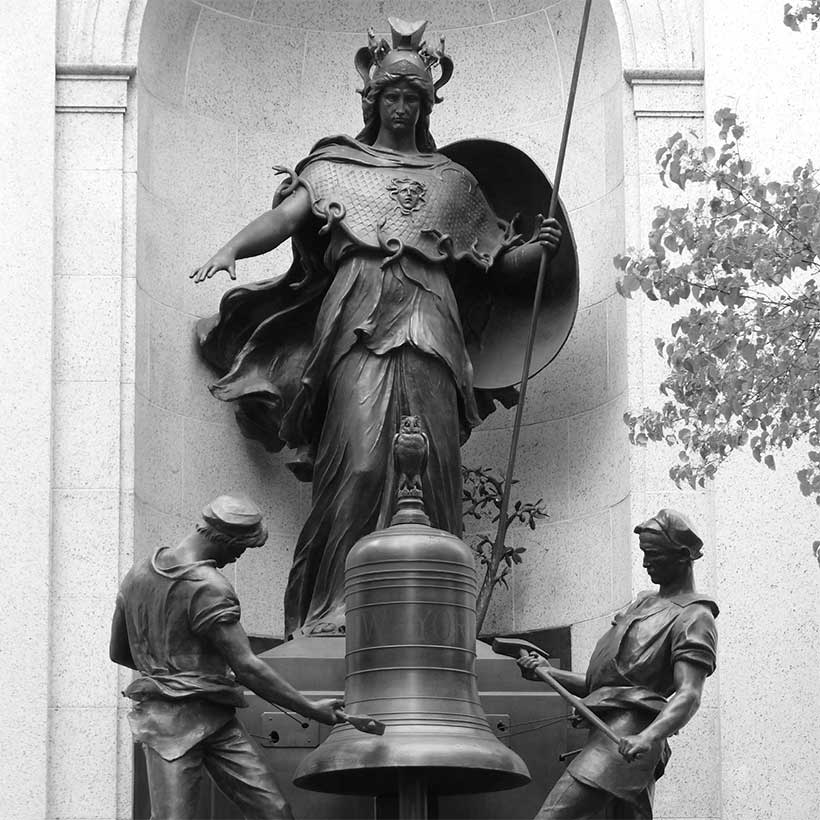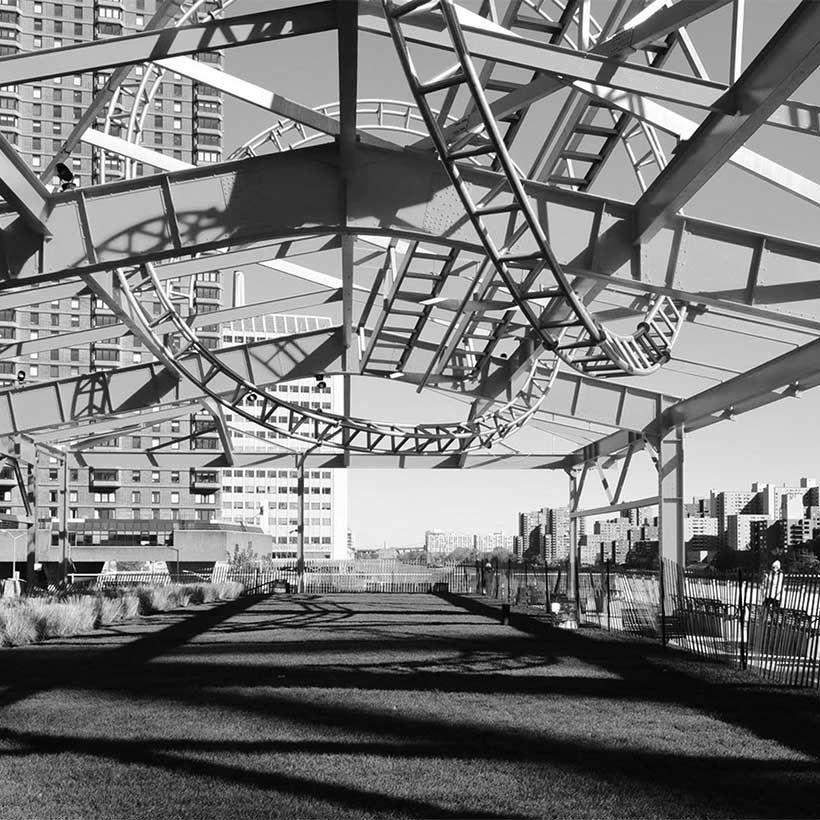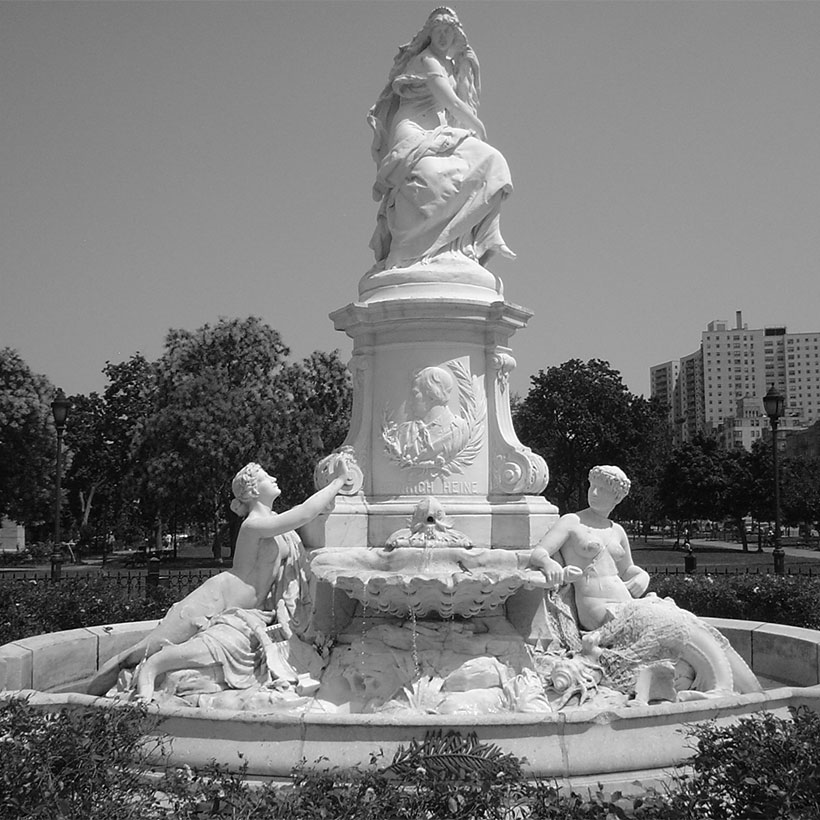Monument of the Month: Robert Burns Monument
Celebrating 30 years of public art
Thirty years ago, The Municipal Art Society of New York (MAS) launched the Adopt-A-Monument program in collaboration with the NYC Public Design Commission and the NYC Parks Department, to secure private funding for the rescue of public art in danger of deterioration. To date, MAS’s Adopt programs have raised nearly $4 million dollars to conserve fifty-one works of art in all five boroughs. In honor of the 30th anniversary of the program, we are highlighting one restoration per month in 2017.
On the crisp morning of October 15, 1993, the monuments to two great Scottish bards were rededicated in Central Park. The charming event within the nave of elms on Literary Walk, enhanced with the music of bagpipers, had a magic that will be remembered by all who were there – and that includes not just the hundreds of invited guests, but all the bicyclists and joggers who happened to be passing by. Together they shared in the recreation of 19th century tradition and Scottish history and marveled at what grand monuments evoke.
In honor of Poetry Month, we revisit the restoration of one of those masterpieces of public art: the Robert Burns Monument.
In 1989, the Saint Andrew’s Society, aware of the deteriorating condition of the Robert Burns and Sir Walter Scott Monuments, approached the Municipal Art Society to rescue these masterful artworks under the Adopt-A-Monument program. The resolve of two great Caledonians, J. Sinclair Armstrong and Chauncey G. Olinger, led to a campaign to restore the famed Scottish writers who grace Central Park.
Before MAS’s restoration in 1993, streaks marred the statue’s once polished surface disfiguring the face, arms, and hand. Its fine details appeared flat and opaque. The quill originally held in Burns’ right hand was missing, muting the significance of the gesture, and the statue tilted backwards on an uneven Aberdeen granite base.
During the summer of 1993, the Robert Burns Monument was conserved by Daedalus, Inc., under the management of the Adopt-A- Monument program. The sculpture was rigged with nylon straps and lifted from its base by crane and placed on wooden blocks near the base during treatment. The bronze was cleaned with fine grade crushed walnut shells and washed with water and a mild liquid detergent using medium nylon bristles and sponges. His missing quill was modeled from photographs, recast, and reattached with a threaded bronze rod. Holes in the scroll and plow were filled. The sculpture was chemically repatinated to its historic statuary brown color, rinsed and dried, and then brush-coated with warm Incrlac, an acrylic resin lacquer and corrosion inhibiter. Finally the bronze was coated with Butcher’s wax and buffed to a soft luster with brushes and soft cloths, and a new pedestal was set.
The MAS is responsible for maintaining all of the works of art conserved under the Adopt program, In the case of the Robert Burns and Sir Walter Scott Monuments, we are grateful to the Central Park Conservancy monuments crew for cleaning these works annually. Enter mid-park near East 66th Street to access the Literary Walk and enjoy the statues in person.
And learn more about the statues in this excerpt from a 1992 keepsake publication, “Robert Burns and Sir Walter Scott Monument Project,” written by MAS and produced with The Saint Andrew’s Society to raise funds for the conservation:
The monument to Robert Burns (1759-1796) was commissioned mostly by New York residents of Scottish descent on the 121st anniversary of the Peasant Bard’s birth. A companion piece to the Walter Scott Memorial, already on the south end of the Central Park Mall, Scott was cast in Edinburgh by the same sculptor, Sir John Steell, and placed opposite Scott on Literary Walk in 1880 uniting two great Scottish literary figures.
Born in Alloway, son of working gardener, Burns was encouraged to read whatever books were available, Shakespeare, the bible, biography. At an early age, he was proficient in writing, arithmetic and theology. But as an unsuccessful farmer, Burns led a hard life. His poems and essays never generated sufficient income to support his family and numerous illegitimate children. For a brief season, with the publication of the Kilmarnock Poems (1786) he was lionized by Edinburgh society, but this definitely independent man rebuffed the patronizing and chafed at class distinctions. Burns championed the causes of American independence, upheld African-American freedom, and had contempt for the “unco guid” “rigidly righteous “of any kind.
Despite hardship, Burns wrote hundreds of poems. He is credited with reconstructing the Scottish folk song and ballad, rescuing these genres from obscurity. He also composed some of the most lyrical poems in the English language: “The Cotter’s Saturday Night,” “Twa Dogs, A Tale,” and “To a Mouse On turning her up in her Nest, with the Plough, November, 1785.”
Much of Burns’ writing is in lowland Scots dialect, making it inaccessible to most of the English-speaking world. Nonetheless, his work is widely translated and his talent recognized around the world in celebrations at Burns Suppers. The poet’s appeal lies in his understanding of the common man. Phrases from his poems have become part of everyday English speech: “the best laid schemes o’ Mice an’ Men aft agley”; “auld lang syne”; to see oursels as others see us!”
When the statue of Robert Burns was dedicated on October 3, 1880, in Central Park, crowds gathered to hear Grafulla’s Band perform Scottish airs. By three o’clock, an audience of five thousand had assembled in front of the monument which was veiled in an American flag. The New Yok Caledonian Clubs attended in Highland dress. On the grandstand invited guests convened, among them Alexander Hamilton, Jr.
George William Curtis – author, editor and supporter of woman’s suffrage and civil service reform, and chancellor of the State University of New York – was the guest orator. Curtis equated Burns’s poetry with Raphael’s paintings and Mozart’s music; and the compassion that Burns had for the peasant farmer was likened to Abraham Lincoln’s empathy for “plain people.”
“When Burns died there was not a Scotsman who was not proud of being a Scotsman. A Scotch plowman singing of his fellow peasants and their lives had given them in their own eyes a dignity they had never know. “A man’s a man for a’that.” New York Times, 3 Oct. 1880
The colossal bronze figure of Burns rests on a tree stump. The poet is depicted with his head turned upward to the skies at the spot where he bid farewell to his love, Mary Campbell, on an early October morning. A cape is thrown about him and a plowshare underfoot suggests his humble origins. The tablet that lies at his feet is engraved with the first verses of the song, “To Mary in Heaven.”
